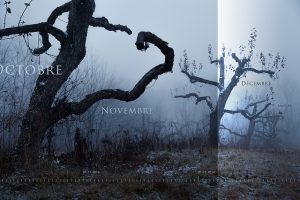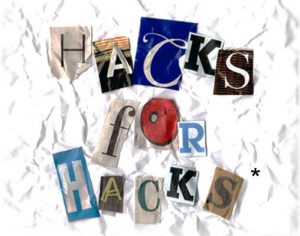Publicity
Image: Procter & Gamble, Business Wire, the 2017 Times Square holiday restrooms, a promotion for Charmin. The line too small to read in this image is: “The best seats on Broadway.”
This “media opportunity alert” arrived in my inbox:
Hi, Porter, Thought you might have interest in checking out this event spotlighting Mark Ballas and girlfriend BC Jean.
The singer-songwriter duo has teamed up with Charmin for the December celebration of restrooms in Times Square–an entire storefront of unique, unforgettable, state-of-the-art bathrooms free to the public (timely for the holiday season in NYC).
On December 19th, Jean and Ballas will perform singing and dance routines on-site.
Happy to have you there for a front row seat/interview with BC and Mark.
Please let me know if you’re interested?
I wrote back:
Hi, Nadia, I cover the international book publishing industry. Despite what many may think of books these days, our publishers do not believe we’re talking about toilet paper. Yet. Thanks, though.
With the help of AdWeek, I’ve learned that from 2006 to 2010, Charmin rented space in which to create bathrooms for seasonal shoppers in Times Square. It has revived this holiday tradition this year at 1601 Broadway between 48th and 49th Streets with 14 “themed bathrooms” open 10 a.m. to 10 p.m. for shoppers, through December 24.
The first thing we learn here is that if you work for a toilet paper company, you’d better love bathroom jokes. This is Procter & Gamble at work, squeezing the Charmin for every last available pun. All’s fair in love and advertising.
But the second thing we learn here–and the reason I’m subjecting you to this plumber’s view of American marketing–is how a publicity person/PR agent should not be operating. If you’ve got a publicist for your books or are thinking of hiring one, you need to know what this dynamic looks like from the journalist’s side of the stall door.
My provocation for you today comes in the form of three questions with which to quiz your publicity person.
Read MoreAre you an author? Is your book about to be published? Are you wondering how to promote your book?
Please welcome twenty-year veteran of the publishing industry Claire McKinney to Writer Unboxed today!
Claire has worked for major publishers, including Little, Brown and Company, Putnam, and Disney Publishing, and is now the author of a new book for writers called Do You Know What a Book Publicist Does? A Guide for Creating Your Own Campaigns. It’s chockfull of insights, and is so grabby that Therese consumed it in one sitting. Trust us: This book is jam-packed with good ideas. More about it:
Over the years, Claire McKinney has found that the lack of information on how book promotion works has left most authors in the dark, without a clear idea of how they can contribute to their own campaigns. In her book, she opens a window into the world of media relations and publicity so that authors will learn:
How to promote your book to the media
How to create your own media contact list
How to write press materials and how to use them
How to create a timeline and plan a campaign on your own
How to pitch, who to pitch to, and when
How to talk to your publisher about publicity
Claire has appeared as an expert on self-publishing on CSPAN and the Today Show. She travels regularly to speak to authors and audiences about book promotion, publishing, and social media marketing. We’re thrilled to share an excerpt from her book with you today.
Learn more about Claire and her book on her website, and follow her on Twitter.
Planning Your Publicity Timeline: When to Publish
When you start a campaign and when you publish used to be very critical. it still is for some books, but not for all. Prior to the time of blockbuster publishing, books that were released were “launched.” Publishers used to have nice parties, and reviews and press were timed to the book’s arrival in stores. Although the amount of books published has increased over time, the actual publishing of them has mellowed. Publishers don’t have the money for big shindigs every month, and for some titles it is possible to get media attention beyond the first few months of publication. The basics of timing for publication can be determined with some parameters.
Here’s a trade secret: no one, not even the big publishers, know exactly when to publish a book. Yes, there are some givens, like making sure you are able to get into holiday and other specialty promotions like Christmas, Mother’s Day, Father’s Day, etc. Then there are books by authors that consumers are trained to buy in a certain month based on its availability. I’m talking about Michael Connelly, James Patterson, and others who write at least one book per year. Publishers also consider the competition for shelf space and marketing and publicity opportunities. I should also mention the reason a book is usually published on a certain date is because of marketing and publicity reasons. We try to get books out there when they will be featured most prominently and when the media are […]
Read MoreSeeing your book on the silver screen: it’s a universal dream, one that nearly every novelist I’ve worked with has confided that they harbor. Barely a day goes by when an author does not ask me whether I have any Hollywood connections who could help them get a foot in the door.
Sure, I have some loose contacts in “The Industry.” A screenplay writer here, a director there, a financial VP. But that doesn’t mean I can slip someone a manuscript and open doors. Far from it. In fact, how and why certain books get made into movies is a complete mystery to me — as it is to so many others.
Which is why, when I recently met the co-founder and president of production and acquisitions at an L.A. production company associated with Showtime Networks, CBS Films and Netflix over a conversation about a book he was considering making into a movie, I asked if he’d talk me through the process of how, exactly, novels are discovered by the film industry.
I’m delighted that he’s agreed to do so “on the air” here at Writer Unboxed. A warm welcome to Brett Tomberlin of Imagination Design Works (IDW).
Q: In general, where do the ideas for the movies you decide to produce come from?
BT: In most cases scripts come to us though attorneys or agents. Since there are so many lawsuits, you have to be super careful in Hollywood to only take material from an attorney, a manager or an agent with all the legal bases in place.
Sometimes people come in without a script but with a concept. These are usually people we know and have worked with. We know their track record and their capabilities, so we’ll talk to them.
And we do get people coming to us with books. As long as the book is published – whether traditionally or self-published – we can look at it because its publication is a time stamp showing it’s been released out into the public. Legally, this works for us.
Q: About how many of the ideas you get come from books?
Read MoreWarning: Hacks for Hacks tips may have harmful side effects on your writing career, and should not be used by minors, adults, writers, poets, scribes, scriveners, journalists, or anybody.
Wow, you’ve been asked to read a piece of your writing! In PUBLIC! This is a great opportunity to connect with new readers and your fellow authors, to say nothing of stroking your fragile ego and emotional neediness. Here’s how you can wow your audience and win new readers and maybe even get laid.
Before the Reading
Take the Stage
Deep down inside we writers know that those pie-in-the-sky dreams we all harbor of getting our books reviewed by the New York Times, or featured in Oprah Magazine or on NPR’s Fresh Air are, for the most part, just that: pie-in-the-sky-dreams. A few years back here on Writer Unboxed I gave a glimpse of why.
But let’s fess up: somewhere even deeper down inside, right next to the ache in our heart we’ve been trying to assuage throughout years of solitary drafting, querying and facing the sting of rejection over and over again, is a dense nugget of hope that those pie-in-the-sky dreams will come true. After all, the the New York Times does review a good handful of books. We tell ourselves silently, “one of them could – and should – be mine.”
In my work with authors, I hear this wish articulated over and over again. And I want nothing more than for that wish to come true. When it does — whether we’ve landed a story for one of our authors in The Washington Post or a feature on BuzzFeed, or firmed up an interview with NPR or MSNBC — my team and I text each other in excitement. We stop everything to watch or listen to the interview live. In part, our excitement reflects the fact that this type of high level coverage is painfully rare.
You might think that if you don’t make it to that level of coverage, you’ve failed. That your publisher or publicist has failed. As Kathy Sherbrooke, author of the exquisite debut Fill the Sky recently said to me, “We tend to associate success with what we see “regularly,” i.e., in the major press outlets that we frequent: major newspaper reviews, coverage in significant trade publications and TV interviews.”
Read MoreImage – iStockphoto: Celafon
Suiting Up for the Attention Economy
From time to time–many journalists know this moment—it feels as if several stories or trends you’ve been covering (or trying to dodge) start locking into place in some sort of shape or design or purpose. Call it “news relationship syndrome.”
This happened for me at the beginning of the month, and it brought together:
In Berlin, Michael Tamblyn of Kobo had introduced the idea of a “fifth wave” in book retail, and this is something that Jane Friedman and I wrote about in the May 3 edition of The Hot Sheet, our newsletter for authors. Tamblyn was concerned that industry players today might be breathing a sigh of relief and thinking that the digital scare has passed, that they can just “get back to publishing and making books without having to worry about the industry remaking itself.”
Tamblyn describe four historical “waves” of publishing retail:
And then he dropped his bombshell: “The fifth wave,” he said, “isn’t a format shift. And it isn’t a change in where books are sold or distributed. It isn’t subscription vs. single-title sale. It isn’t about how much a book gets sold for at all. Instead, it is the commodification and commercialization of attention.”
Welcome to the wars of attention.
And as we trundle out onto this unholy, “unpresidented” battlefield, I want you to think about this brilliant phrase that Tamblyn lobbed at us like a mic-drop: “It is an arms race of monetized attention.”
The mechanized (algorithmic) warfare around you is being waged by Netflix, Amazon Studios, HBO, Hulu, Showtime, everything on your Roku. Have you heard any of your fellow author-soldiers talk of wanting to get into the miniseries content armies? I have: at London Book Fair, when I spoke on a panel in the Author HQ program in March, the writers in the audience wanted to know about Hollywood. And Hollywood is trying to capture your reader’s attention as a prisoner of war.
“It is about the fight for time,” Tamblyn said. And it’s too easy, he said, to shrug and say that books have always “jockeyed with TV and movies and magazines and newspapers for people’s time.
“Now we live in an attention economy,” he said, in which thousands of companies “have a very clear sense of what people’s time is worth.” In other words, what they can charge for your attention, “what they would like […]
Read MoreSometimes the shortest things can unexpectedly be the hardest to write. And that’s the case with author biographies, or bios for short. Bios aren’t like CVs. They’re not as formal. They are more like mini-stories. They give a flavour of the person behind them. And like query letters and blurbs, they function as ‘hooks.’
Over the course of a writing career, you’ll discover you need more than one bio. In fact, you might find that you need quite a few. Each of them will be written for particular purposes, whether that be pitching for genre-specific projects, for festivals and conferences, or for book proposals and blurbs. Each of them will have a slightly different angle, though they encapsulate the same basic biographical and bibliographical information. And though they may fall into ‘types’ of bios—ie, for publication, presentation or industry purposes—each bio is also slightly different, even within each type.
The Case of Valerie May
For a bit of fun, let’s take the (imaginary) case of Valerie May, author of romantic suspense novels who also writes the occasional non-fiction authorship book. Here are a couple of her pitch bios, one for a non-fiction book called Roses have Thorns, a practical guide to maintaining a writing career, and the other for her new novel, The Jade Peacock.
Bio A: Valerie May is the award-winning author of fifteen novels, including the internationally bestselling The Black Rose. She is the founder of Delicious Shivers, a popular blog specialising in the romantic suspense genre, and with fellow author Jenna Sims initiated the first Delicious Shivers seminar, now an annual event. Over the course of her career, Valerie May has been a bookseller, served on several literary industry committees, and been a popular speaker at conferences and festivals.
Bio B: Born in London of an Irish father and French-Vietnamese mother, Valerie May was brought up between languages and cultures and now lives in Sydney, Australia, with her family. The award-winning author of fifteen novels of romantic suspense, including the bestseller The Black Rose and its popular sequel, By Any Other Name, as well as three works of non-fiction, she also blogs regularly, and features as a speaker at literary events. Her Vietnamese grandmother’s dramatic story was the inspiration for The Jade Peacock.
These two bios have a similar structure, but a different emphasis, with each aimed at establishing Valerie’s credentials in a particular context . For Roses have Thorns, the emphasis is on Valerie’s professional experience in the book industry; but for The Jade Peacock, the bio takes in not only her track record as a writer, but also a great deal more personal information, including her cultural background which is relevant in this case. In both, the fact that she is a successful professional author is front and centre, but in the novel bio, there is a more private angle as well, allowing the reader to relate to the author as a person. Meanwhile, for the non-fiction book, her experience of the industry from different professional points of view–author, blogger and bookseller–is highlighted, and more personal information is omitted.
By the way, it’s my opinion that it’s best to write bios in third person, and to stay away from quirky bios.
Read More



















